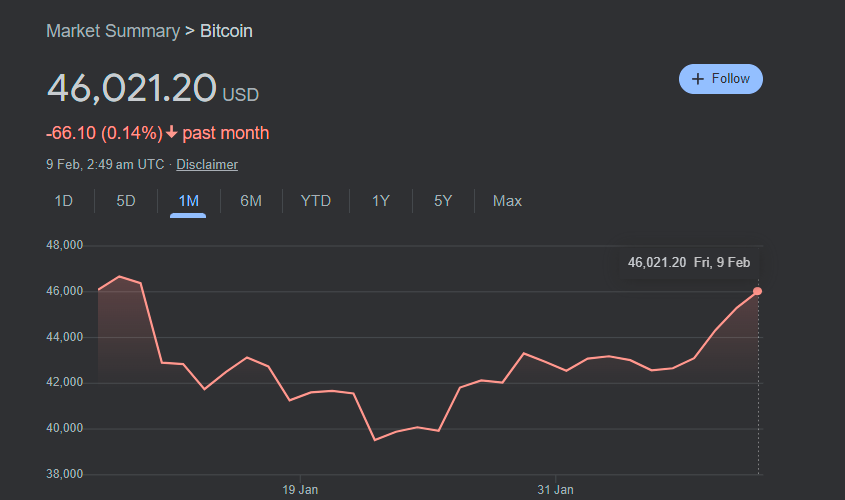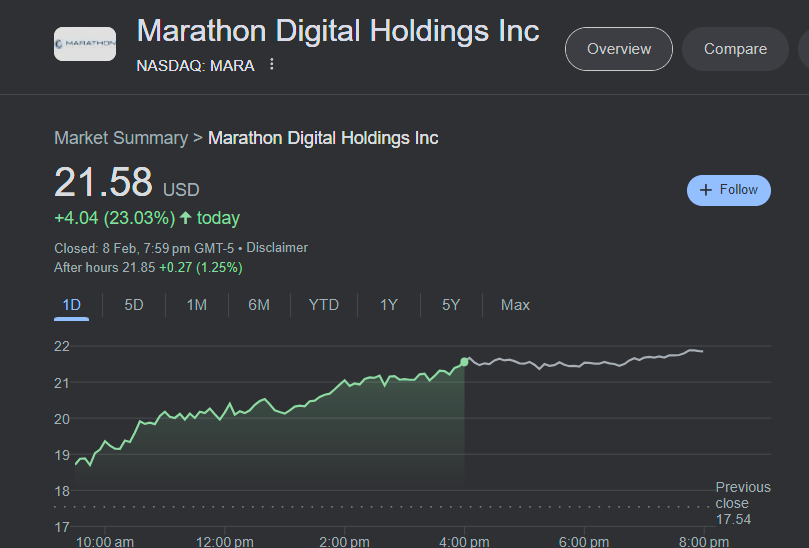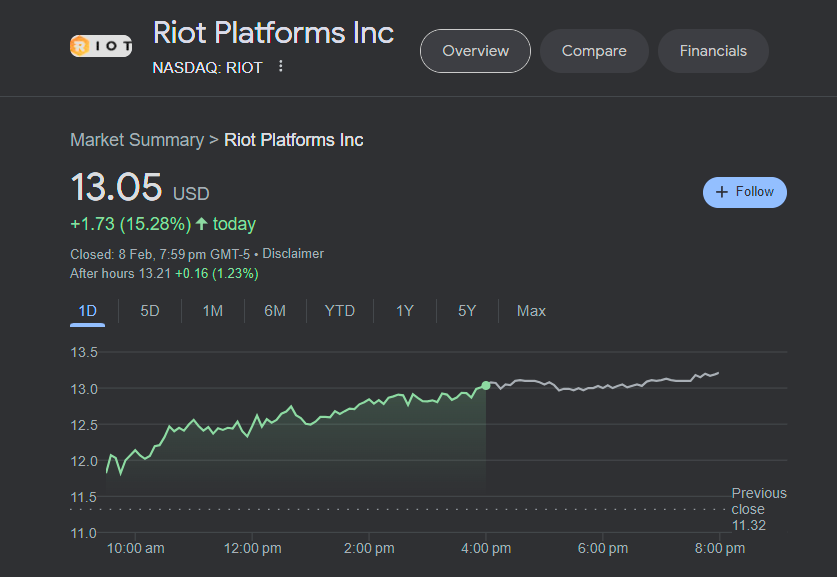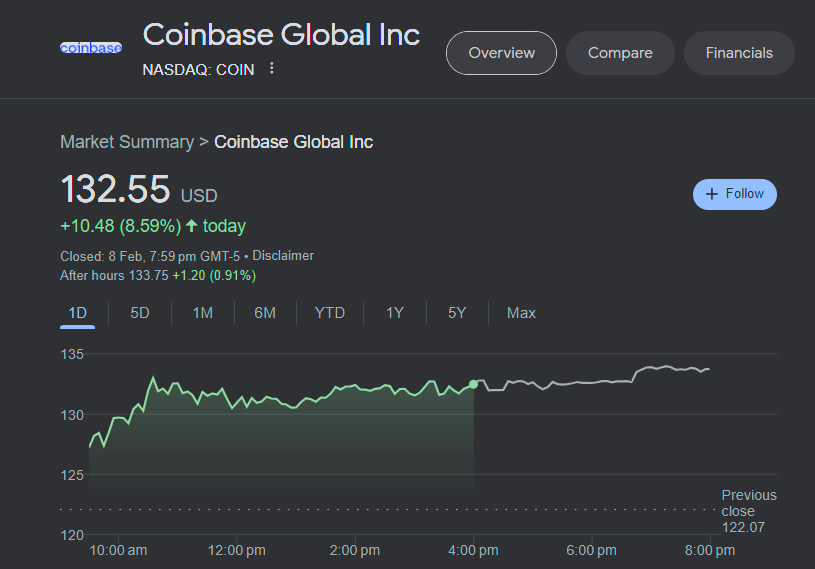Table of Contents
Bitcoin has hit its highest level since its ETF approvals in January. With Bitcoin largely trading sidewise over the past month, investors have been anxiously questioning which direction the world's biggest crypto will head.

At the time of writing, Bitcoin is trading at $46,021. Upon the SEC's announcement of its approval, Bitcoin briefly topped the $47K mark but dropped to as low as sub-$40K.
Even crypto exchange Coinbase and mining firms Marathon Digital and Riot Platforms have seen their stock prices jump as a result of Bitcoin's recent jump.



Bitcoin whales are reportedly behind the latest Bitcoin drive. Crypto analyst Ali Martinez highlights that the number of Bitcoin wallets holding at least 1,000 BTC rose to a multi-month high of 73.
#Bitcoin whales are accumulating more $BTC! Around 73 new whales now hold 1,000 #BTC or more, marking a 3.66% increase in two weeks. pic.twitter.com/VFArJYTQZl
— Ali (@ali_charts) February 7, 2024
Furthermore, the Bitcoin ETF inflows have been consistently increasing. As of 8 February, the total daily trading volume for Bitcoin ETFs hit $1 billion.
Bloomberg Intelligence analyst James Seyffart said there were "solid volumes all around today." BlackRock’s iShares Bitcoin Trust (IBIT). The trust experienced a daily trading volume of $478.5 million, higher than Grayscale Bitcoin Trust’s $371.5 million in volume.
Solid volumes all around today but $IBIT topped the group. pic.twitter.com/S8R5IbCyC4
— James Seyffart (@JSeyff) February 8, 2024
Seyffart also pointed out that GBTC outflows were as high as $101.6 million but inflows have outpaced it.
$101.6 mln to be precise
— James Seyffart (@JSeyff) February 8, 2024
It was also recently revealed that the largest publicly-traded holder of Bitcoin, MicroStrategy, acquired 850 BTC for $37.2 million in January. The firm now holds 190,000 BTC.
In January, @MicroStrategy acquired an additional 850 BTC for $37.2 million and now holds 190,000 BTC. Please join us at 5pm ET as we discuss our Q4 2023 financial results and answer questions about our #bitcoin strategy and business outlook. $MSTR https://t.co/j5SbcELsue
— Michael Saylor⚡️ (@saylor) February 6, 2024
Bitcoin's momentum is believed to continue as the market gears up for Bitcoin halving on 19 April 2024.
In an effort to reduce inflation, Bitcoin halving is programmed into the Bitcoin protocol, halving the rewards Bitcoin miners receive for processing transactions on the blockchain:
- 2012 - rewards halved to 25 BTC
- 2016 - rewards halved to 12.5 BTC
- 2020 - rewards halved to 6.25 BTC
This system will continue until 2140 when the proposed limit of 21 million Bitcoin tokens is reached.
“Bitcoin appears set to resume its march up after the Grayscale outflows finally tapered off,” said Caroline Mauron, co-founder of digital-asset derivatives liquidity provider Orbit Markets.

“We expect the Bitcoin halving narrative to gather momentum over the next few weeks, which should help drive a rally through the psychologically important $50,000 level,” she explained.
A team including DBS Bank chief economist Taimur Baig agreed with the halving narrative. “There is a simple economic reason why prices should rise. As the reward for mining decreases, the price for mining output (namely Bitcoin) must increase to compensate and not trigger a withdrawal of computational resources by miners.”
2012's halving saw Bitcoin's price jump from $12.35 to $127 just 150 days later. In 2016, BTC was trading at $651 before jumping to $758. Four years later, Bitcoin hit $8,821 ahead of its halving and $10,943 shortly after.
However, price targeting for Bitcoin is a fool's game. We've heard 2024 targets ranging from as low as $25,000 to $1 million. For now, we're just happy Bitcoin is on the up.










